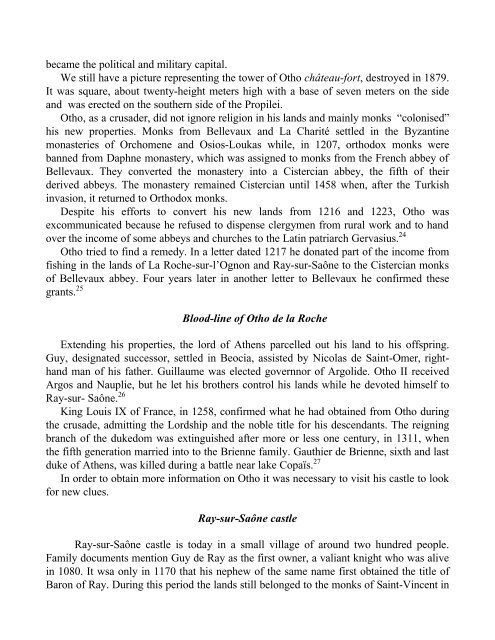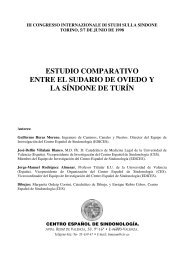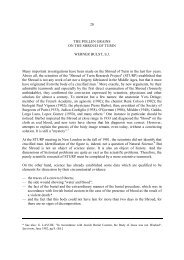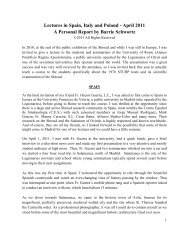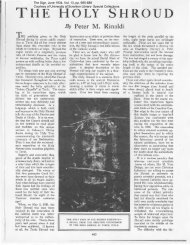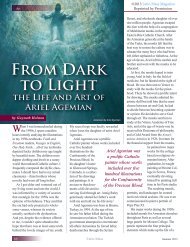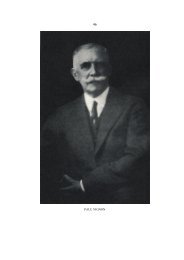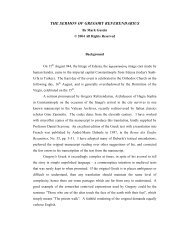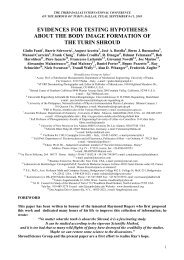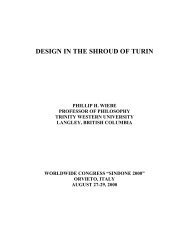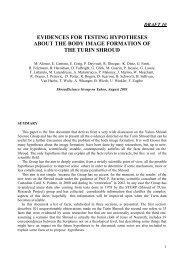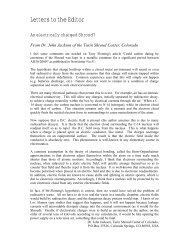Missing Years - Shroud of Turin
Missing Years - Shroud of Turin
Missing Years - Shroud of Turin
You also want an ePaper? Increase the reach of your titles
YUMPU automatically turns print PDFs into web optimized ePapers that Google loves.
ecame the political and military capital.<br />
We still have a picture representing the tower <strong>of</strong> Otho château-fort, destroyed in 1879.<br />
It was square, about twenty-height meters high with a base <strong>of</strong> seven meters on the side<br />
and was erected on the southern side <strong>of</strong> the Propilei.<br />
Otho, as a crusader, did not ignore religion in his lands and mainly monks “colonised”<br />
his new properties. Monks from Bellevaux and La Charité settled in the Byzantine<br />
monasteries <strong>of</strong> Orchomene and Osios-Loukas while, in 1207, orthodox monks were<br />
banned from Daphne monastery, which was assigned to monks from the French abbey <strong>of</strong><br />
Bellevaux. They converted the monastery into a Cistercian abbey, the fifth <strong>of</strong> their<br />
derived abbeys. The monastery remained Cistercian until 1458 when, after the Turkish<br />
invasion, it returned to Orthodox monks.<br />
Despite his efforts to convert his new lands from 1216 and 1223, Otho was<br />
excommunicated because he refused to dispense clergymen from rural work and to hand<br />
over the income <strong>of</strong> some abbeys and churches to the Latin patriarch Gervasius. 24<br />
Otho tried to find a remedy. In a letter dated 1217 he donated part <strong>of</strong> the income from<br />
fishing in the lands <strong>of</strong> La Roche-sur-l’Ognon and Ray-sur-Saône to the Cistercian monks<br />
<strong>of</strong> Bellevaux abbey. Four years later in another letter to Bellevaux he confirmed these<br />
grants. 25<br />
Blood-line <strong>of</strong> Otho de la Roche<br />
Extending his properties, the lord <strong>of</strong> Athens parcelled out his land to his <strong>of</strong>fspring.<br />
Guy, designated successor, settled in Beocia, assisted by Nicolas de Saint-Omer, righthand<br />
man <strong>of</strong> his father. Guillaume was elected governnor <strong>of</strong> Argolide. Otho II received<br />
Argos and Nauplie, but he let his brothers control his lands while he devoted himself to<br />
Ray-sur- Saône. 26<br />
King Louis IX <strong>of</strong> France, in 1258, confirmed what he had obtained from Otho during<br />
the crusade, admitting the Lordship and the noble title for his descendants. The reigning<br />
branch <strong>of</strong> the dukedom was extinguished after more or less one century, in 1311, when<br />
the fifth generation married into to the Brienne family. Gauthier de Brienne, sixth and last<br />
duke <strong>of</strong> Athens, was killed during a battle near lake Copaïs. 27<br />
In order to obtain more information on Otho it was necessary to visit his castle to look<br />
for new clues.<br />
Ray-sur-Saône castle<br />
Ray-sur-Saône castle is today in a small village <strong>of</strong> around two hundred people.<br />
Family documents mention Guy de Ray as the first owner, a valiant knight who was alive<br />
in 1080. It wsa only in 1170 that his nephew <strong>of</strong> the same name first obtained the title <strong>of</strong><br />
Baron <strong>of</strong> Ray. During this period the lands still belonged to the monks <strong>of</strong> Saint-Vincent in


